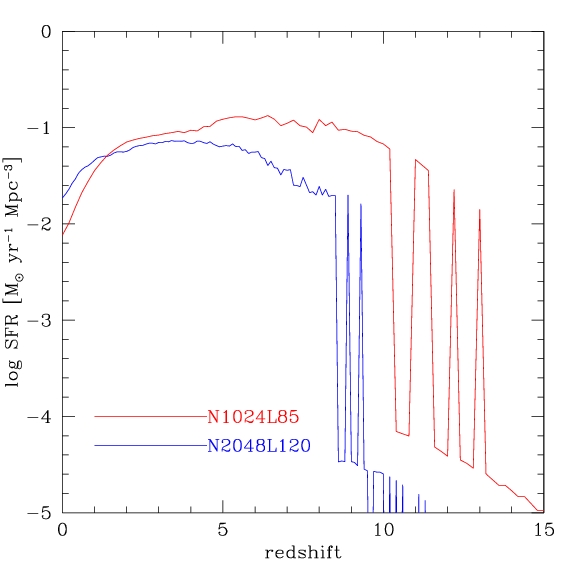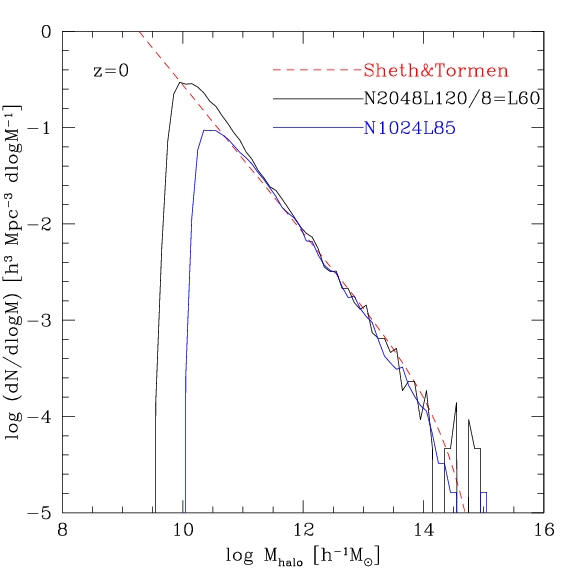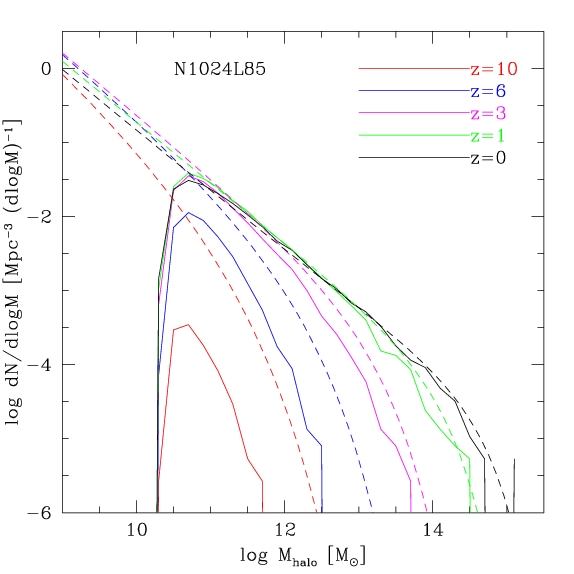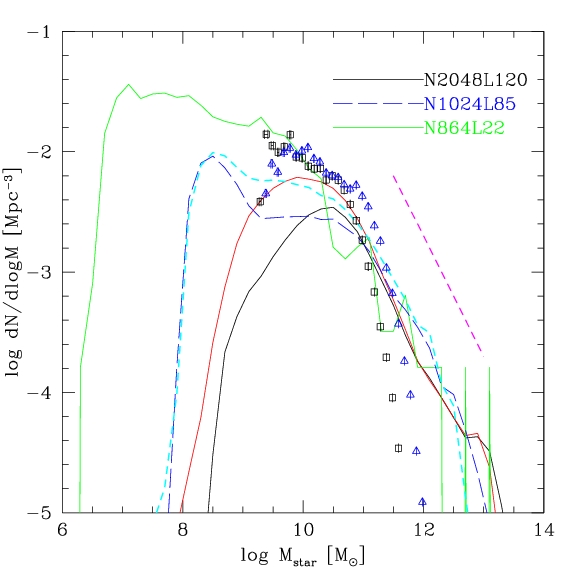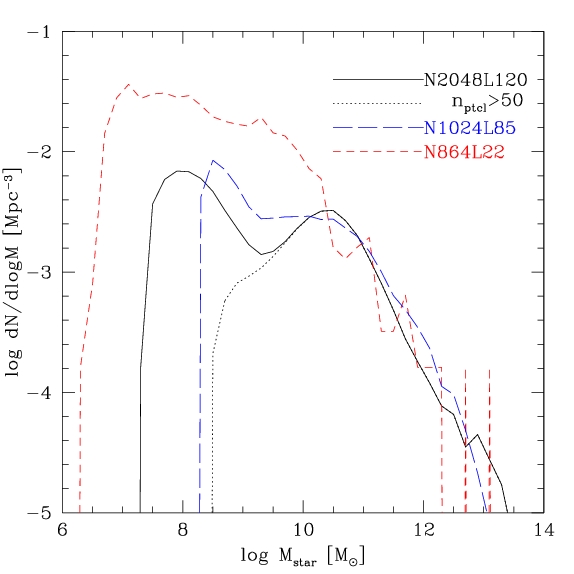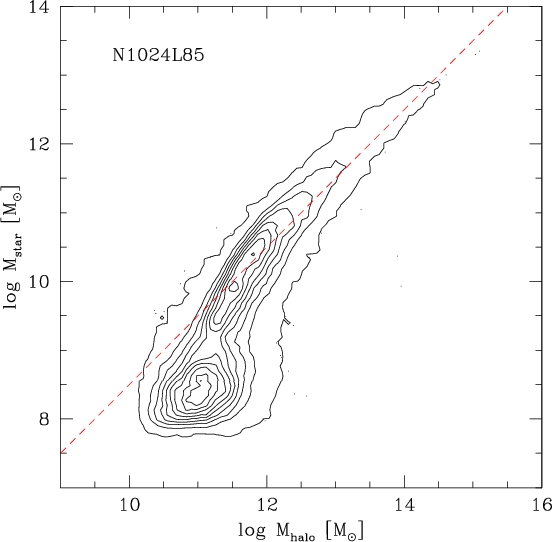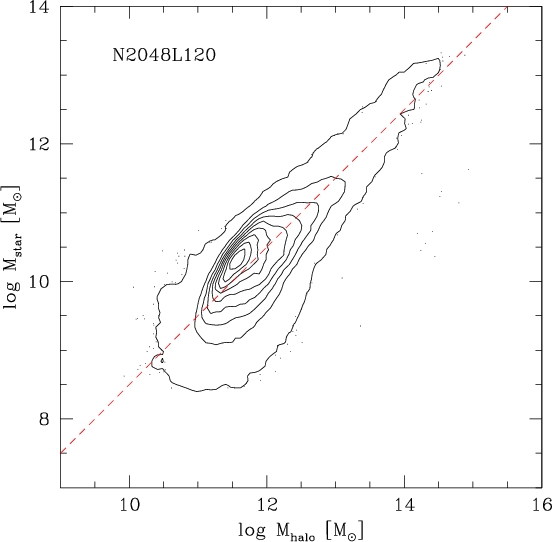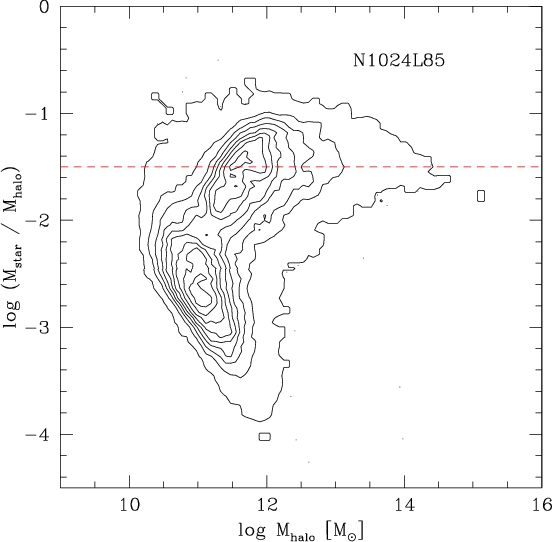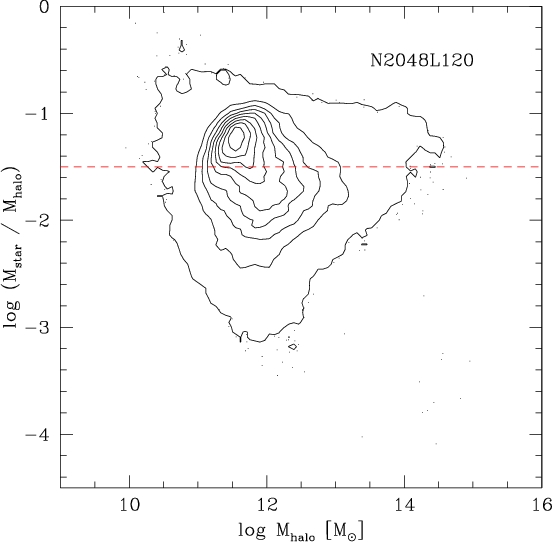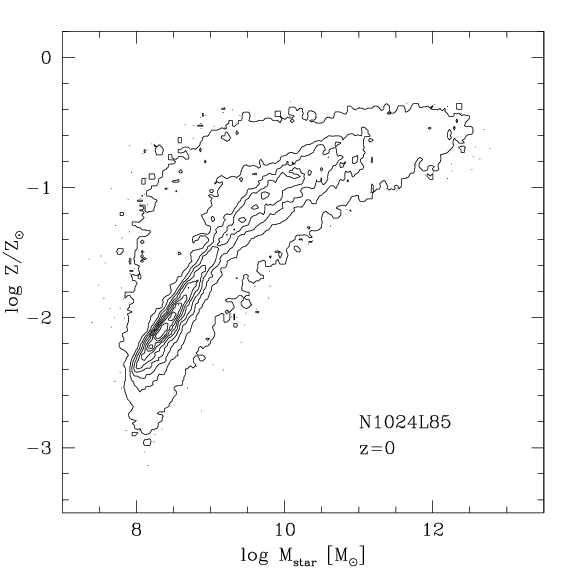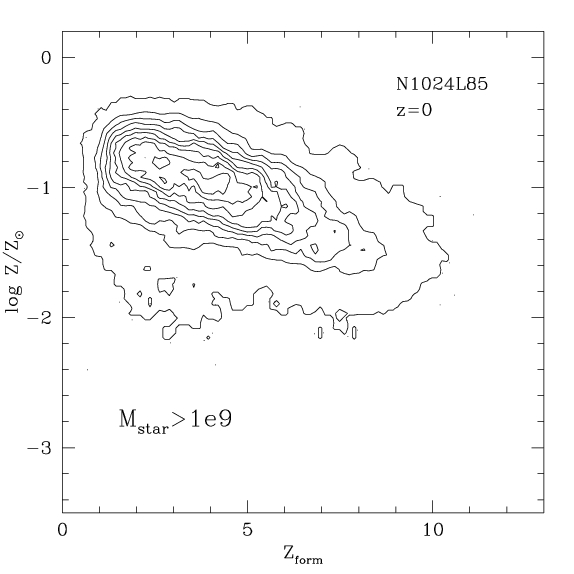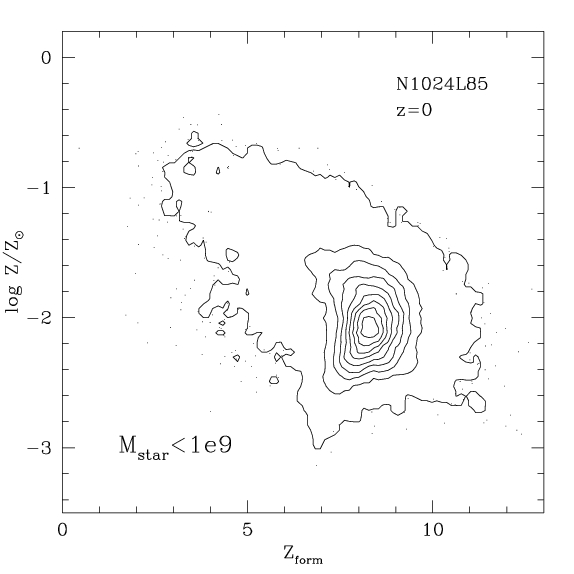Table 1: Simulation parameters for the two simulations: N1024L85(left) and N2048L120 (right).
Note the differences in EUVQUASAR and ZEJECT.
Would the difference in GMASSMIN matter also??
The last line is also different. Renyue said that this is irrelevant. True?
Fig. 1:
Left: Cosmic star formation history of the two simulations.
Middle: DM halo mass functions at z=0.
Right: DM halo mass functions at z=10, 6, 3, 1, 0, compared with Sheth-Tormen.
Fig. 2: Left: Galaxy stellar mass functions at z=0.
Blue long-dashed: original HOP gals of N1024L85
Cyan short-dashed: `demerged' gals of N1024L85
Black solid: original HOP gals of N2048L120
Red solid: `demerged' gals of N2048L120
Right: This is just a reminder that in N2048L120 we have cut galaxies with star particle #s below 100 after our initial discussion. Perhaps we shouldn't do this. The solid line in the right panel shows the original HOP result without the cut.
Fig. 3: DM halo mass vs. stellar mass enclosed within the virial radius of each halo.
Fig. 4: Left: Galaxy stellar mass vs. mean metallicity (with the demerged gals).
Right: From old N768L25 simulation (2001, ApJ, 558, 497; SF paper)
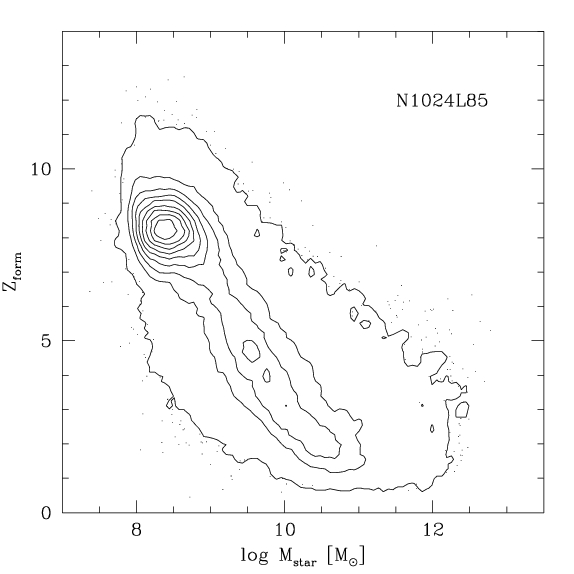
Fig. 5: Above: Formation redshift (converted from mass-weighted mean formation time) vs. galaxy stellar mass (demerged gals).
Below: old results from N512L100 (2001, ApJ, 553, 513; Mach # paper) and N768L25 (2001, ApJ, 558, 497; SF paper).
Fig. 6: Formation redshift vs. mean metallicity of galaxies.
